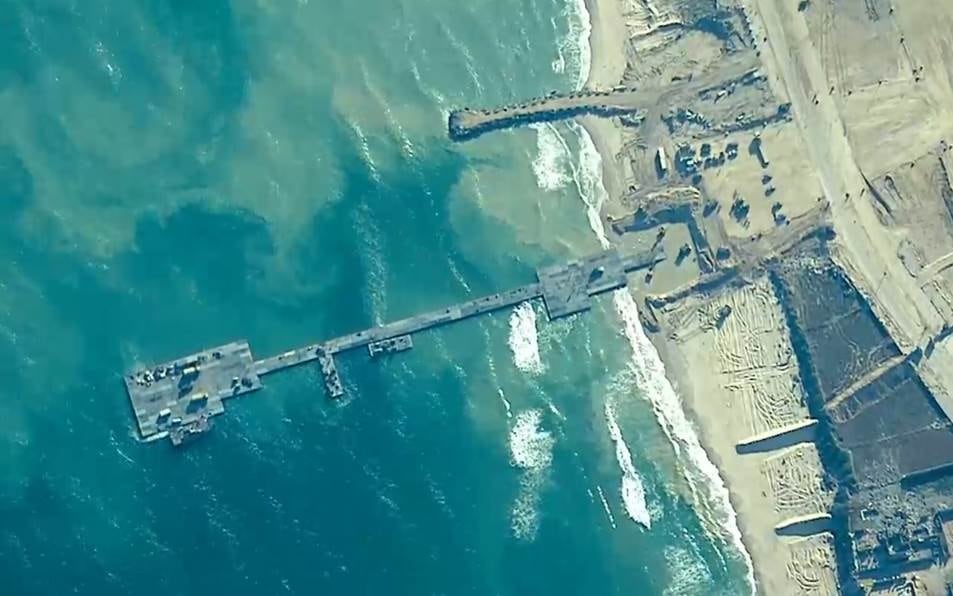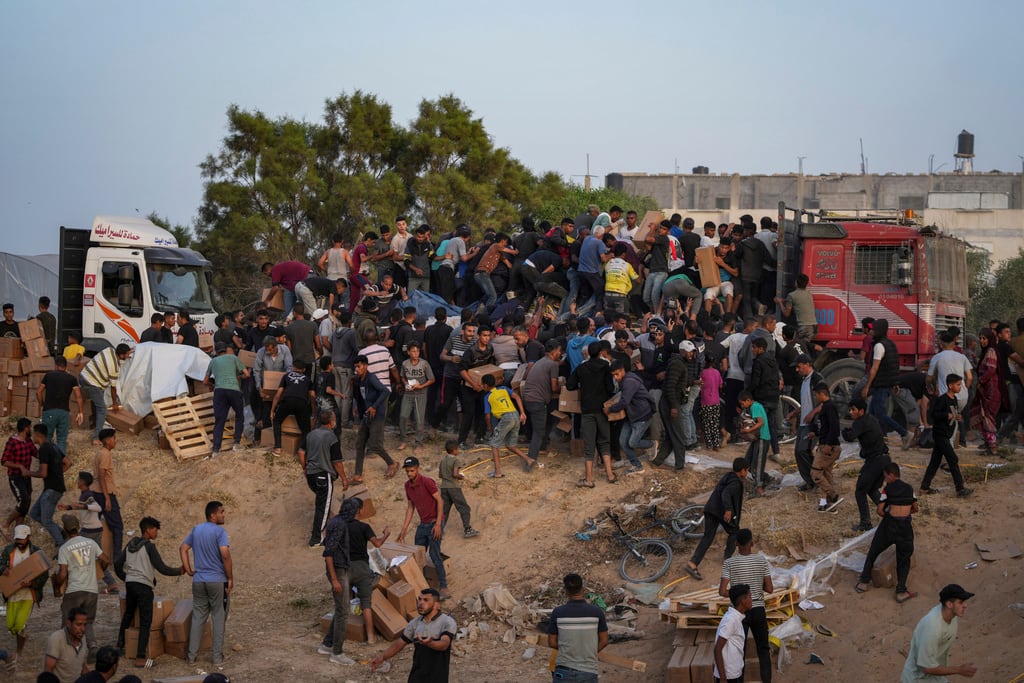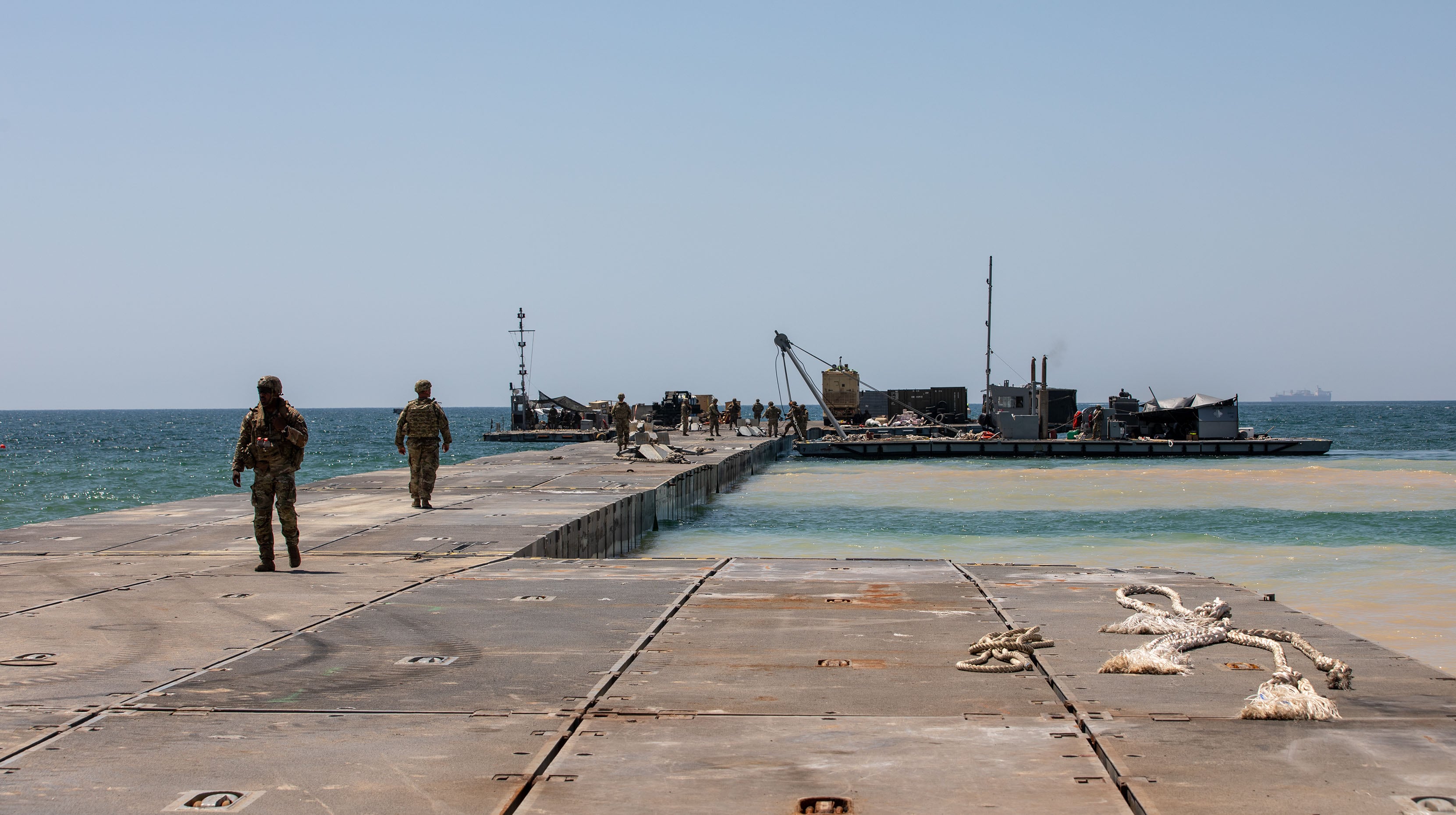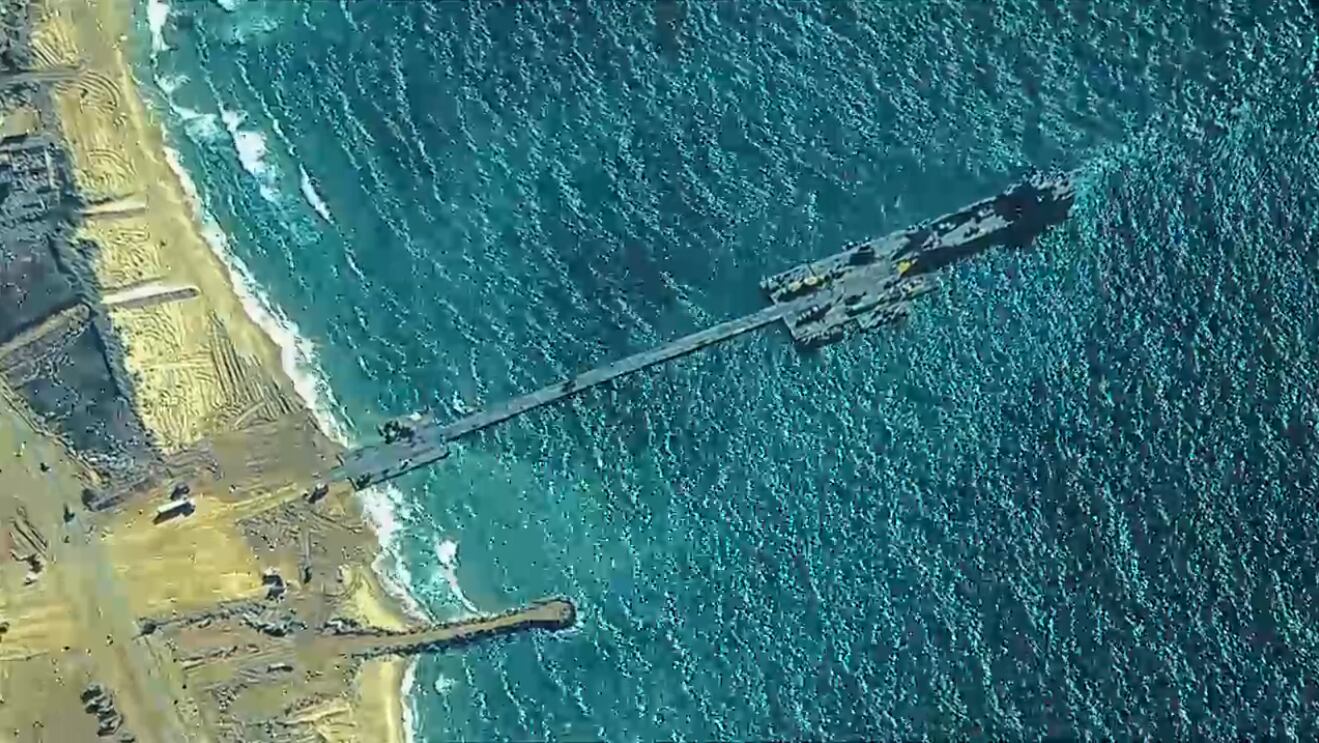When President Joe Biden announced the mission to build a humanitarian pier off the coast of Gaza this March, he framed it as a symbol of what the U.S. military can do.
Palestinian civilians were dying five months into the Israel-Hamas war. Most of the territory was struggling to get food or near famine. And Israel wasn’t opening more land routes for assistance to flow in.
So the U.S. would make a route of its own.
“This temporary pier would enable a massive increase in the amount of humanitarian assistance getting into Gaza every day,” Biden said during his State of the Union speech.
Instead, four months later, the pier’s mission is over and its clearest legacy is what wasn’t possible.
Despite the work of 1,000 U.S. soldiers and sailors using the Joint-Logistics-Over-the-Shore, or JLOTS, capability, the pier couldn’t stay afloat for long due to choppy seas. And while it got aid into the Gaza Strip, it couldn’t fix another intractable problem: actually getting it to the Palestinian people — 96% of which face “acute food insecurity,” according to the United Nations World Food Programme.
RELATED

The Pentagon estimated the pier would cost $230 million, though the final number isn’t yet certain, and Vice Adm. Brad Cooper, the deputy commander of U.S. Central Command, said it would come in well under budget.
A clearer cost has been to U.S. personnel: One soldier remains in the hospital due to a pier-related mishap in May, and is still recovering stateside.
Citing privacy regulations, DOD officials have declined to explain what injured the soldier and two other service members, who were able to return to duty after the incident.
U.S. officials have defended the mission as the safest and most efficient way to get American assistance into Gaza during the war. And they can cite almost 20 million pounds of aid as evidence.
“The pier has done exactly what we intended it to do,” said Cooper.
Many watching from the sidelines in Washington disagree.
The pier arrived at a moment of acute political pressure on the White House to help the Palestinian people, said Steven Cook, an expert on the Middle East at the Council on Foreign Relations.
Despite that, he said, it’s become an emblem of what the U.S. hasn’t learned in the region.
“This is a constant theme in American foreign policy in the Middle East,” he said. “Despite our best intentions, we didn’t really understand what we were walking into.”

‘I was hopeful that would be more successful’
When announcing that the pier was being dismantled, military officials came with a list of statistics. The JLOTS pier delivered 19.4 million pounds of aid, or enough to feed half a million Palestinians for one month.
By comparison, the U.S. has sent 2.4 million pounds via air drops and 33 million pounds via land crossings since the start of the war in October.
In its 20 days of operating, the admiral said, it carried double or triple the amount of aid the U.S. initially expected. Altogether, it was the most humanitarian support America has ever sent to the Middle East.
“That data stands on its own,” Cooper said.
And yet, those numbers have another side. The aid may have gotten onto Gazan territory, but much of it hasn’t reached people in need. Due to rough weather, the pier was in service only about one-third of the time since it was first anchored in May. At one point, it buckled under rough seas and had to be repaired in the Israeli city of Ashdod.
Meanwhile, crowds ransacked at least one aid-laden truck coming from the pier before it could get to distribution points, The Associated Press reported, and the United Nations halted aid distribution at times due to security concerns.

“You can have the best fighting force in the world and the best logisticians in the world, but high seas and strong winds still create quite a dilemma,” said Brad Bowman, who researches U.S. defense policy at the Foundation for Defense of Democracies.
After the NATO summit in July, even Biden acknowledged that the pier could have performed better.
“I was hopeful that would be more successful,” he said.
A JLOTS test case
Still, using the pier in a real-world combat zone likely helped prove its use to the Pentagon, argued Keith Robbins, a retired Army officer who oversaw the JLOTS program for U.S. Transportation Command before his retirement in 2007.
JLOTS is, in essence, a set of metal pieces that can be assembled in multiple ways. It’s meant for calmer waters than the eastern Mediterranean Sea, Robbins said, but there were few better options for the mission itself: quickly shuttling tons of aid onshore.
“JLOTS is the perfect capability to handle that, but it has to be put in the right place in order for it to be successful,” he added.
Now that JLOTS has made its debut in a combat zone, Robbins hopes it will convince the Pentagon to continue funding it.
“Ten, 15 years ago, when I was doing it, the higher-ups didn’t really understand what the capability was,” he said. “I would hope that this has been a great illustration of how valuable this capability can be.”

‘The needs are staggering’
In their briefing last week, CENCTOM deputy commander Cooper and an official from USAID argued the pier hadn’t only finished its mission — it was also no longer necessary.
The maritime supply route was now moving from off the 25-mile Gazan coast to Ashdod, Israel, where aid will enter the strip via trucks.
As the U.S. and humanitarian groups have said for months, there is no substitute for these land crossings.
“The needs are staggering and continue to grow,” said Solani Korde, a USAID official, briefing alongside Cooper.
From the start, U.S. officials stressed that the pier was “temporary.” In other words, the U.S. was not committing to an indefinite mission attached to Gaza, and it wasn’t suggesting this path could replace others.
“A maritime route is not a zero-sum discussion,” said Chris Hyslop, a former U.N. official who now works with Fogbow, a humanitarian advisory group that assisted the pier’s mission.

But even when aid crosses into Gaza it has been extremely hard to deliver. Roads are damaged. Swathes of territory are dangerous. And the actors involved — from Egypt to Israel to Hamas to other groups in Gaza — often don’t have reason to distribute aid quickly, whether due to cronyism, domestic politics or the terrorist group’s total-war strategy, said Cook, the analyst at CFR.
“That is really, chiefly, the obstacle to ensuring that the innocent people of Gaza get the lifesaving food, water, medicine that they need,” National Security Adviser Jake Sullivan said in a July briefing. “It’s distribution within as opposed to distribution from without.”
No pier or new land crossing can solve that problem. But while the pier’s mission may be over, some involved don’t think the maritime route should close.
Mick Mulroy, a former Pentagon Middle East official who also works at Fogbow, the aid group, said the pier was a proof of concept, despite its limitations.
“I think it needs to be continued because quite frankly, the mechanism in Cyprus [where aid was sorted] and the aid delivery zone is already established,” he said. “If we don’t put something in its place that will be for naught.”
Noah Robertson is the Pentagon reporter at Defense News. He previously covered national security for the Christian Science Monitor. He holds a bachelor’s degree in English and government from the College of William & Mary in his hometown of Williamsburg, Virginia.
Geoff is the managing editor of Military Times, but he still loves writing stories. He covered Iraq and Afghanistan extensively and was a reporter at the Chicago Tribune. He welcomes any and all kinds of tips at geoffz@militarytimes.com.





